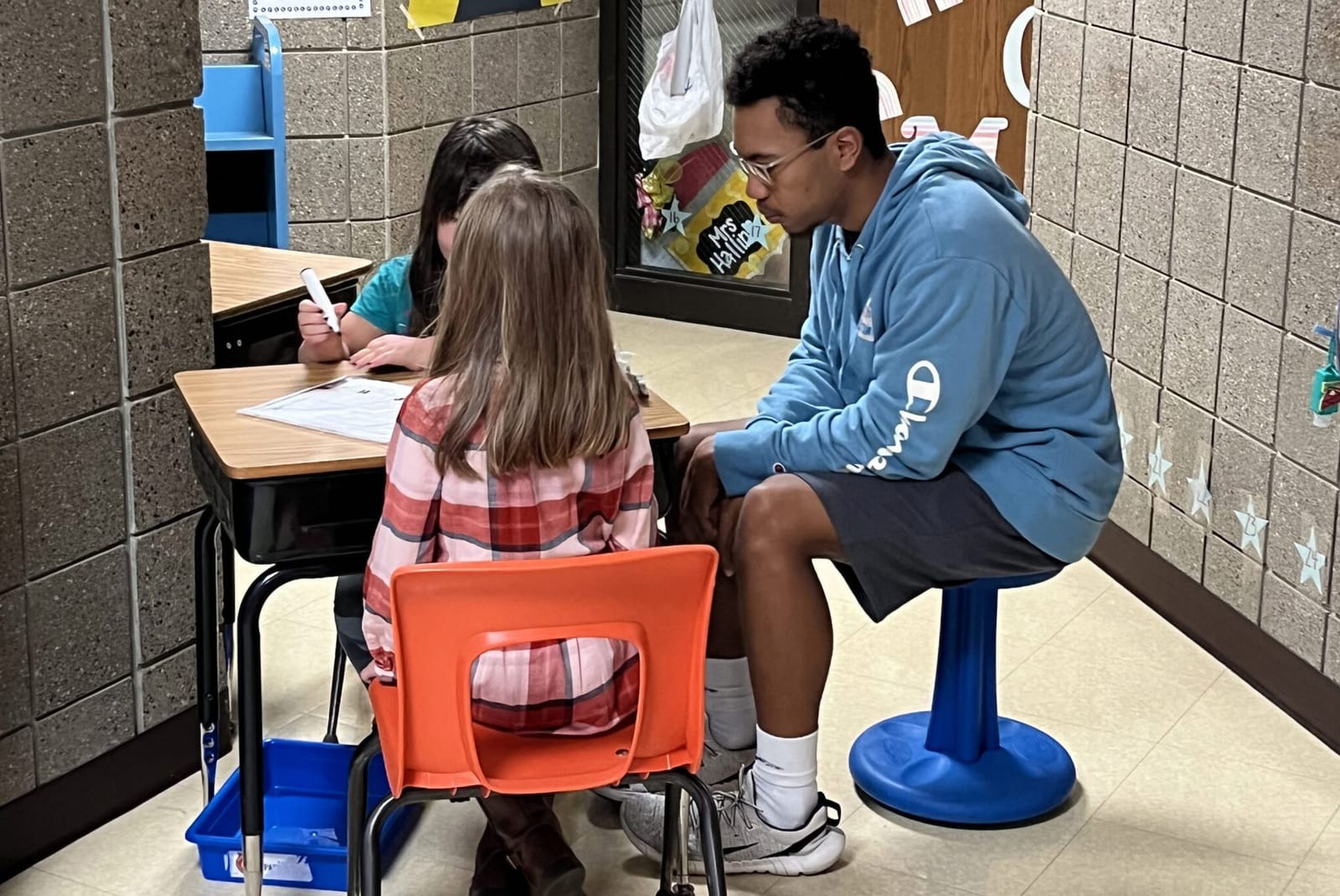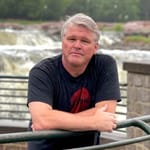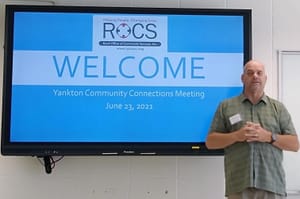Concern over the future of the teaching profession in South Dakota has led to more aggressive efforts by education officials to train and inspire a new generation of classroom leaders, with particular emphasis on elementary school classrooms.
The push comes as kindergarten through 12th grade teacher shortages worsen across the state, a trend driven by below-average salaries and dissatisfaction in the teaching ranks following the difficulties of the COVID-19 pandemic and the recent politicization of social studies standards and crackdown on so-called “inherently divisive” or race-based curricula under Gov. Kristi Noem.
Noem proposed a 5% increase in state aid to education for the 2024 fiscal year as part of her $7.2 billion budget plan, on the heels of a 6% increase in 2023.
That would put $24 million in new money into public schools for the 2023-24 school year, 44% less than the nearly $43 million in new funding allocated in the 2022-23 school year, according to the Associated School Boards of South Dakota. School districts can determine how much to allocate for salaries, but the money is also needed for expenses such as utility costs, food services, transportation, technology and extracurricular activities.
State Rep. Linda Duba, D-Sioux Falls, who serves on the House Appropriations Committee, told News Watch that she plans to work with fellow legislators to push for more education funding in the 2024 budget to help recruit and retain teachers and meet the demands of inflation. The former teacher expressed concern for the profession amid the current political and cultural climate in South Dakota.
“An element of trust and respect has been lost,” Duba said. “There are a lot of like-minded folks who understand what undervaluing teachers and setting low-budget targets has done to state education over the last four or five years. The chickens have come home to roost.”
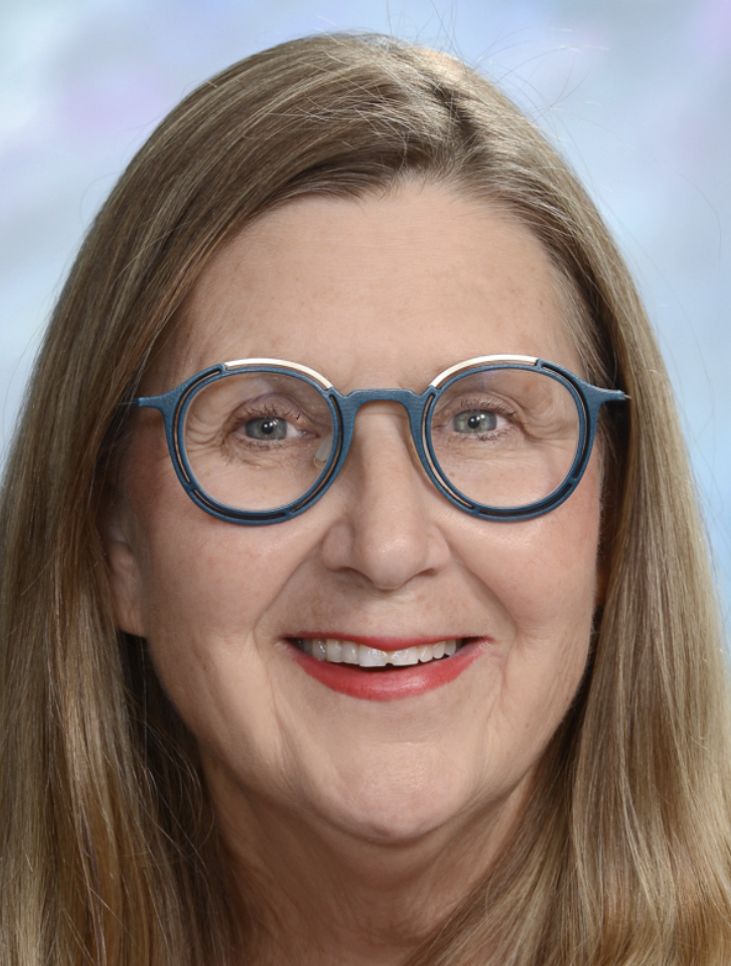
“An element of trust and respect has been lost [for teachers] ... we need to respect their profession by encouraging them to stay here and reward them for their efforts. Being ranked 50th in teacher pay is not exactly a badge of honor.” -- Rep. Linda Duba, D-Sioux Falls
There were 176 statewide teacher openings at the end of December 2022, compared to 111 at the end of December 2021, a result of teacher retirements but also a rise in K-12 enrollment in South Dakota from 128,000 to 141,000 students over the past decade. The current openings include 36 in special education and 34 in elementary education.
The state’s largest school district, Sioux Falls, had 25 open teaching positions in June 2022, according to Assistant Superintendent Jamie Nold, and administrators are still working to fill several positions for the second semester, which begins Jan. 17.
“We’re getting calls from schools looking for teachers in the middle of the year,” said Amy Schweinle, dean of the University of South Dakota School of Education. “That hasn’t really happened in years past. These are unprecedented times, and it seems like elementary education is one of the biggest needs.”
Administrators say chronic vacancies can erode the educational experience due to schools having to combine classrooms (increasing student-to-teacher ratio) or hire less-qualified applicants to fill positions. Sioux Falls has dealt with some classroom openings by hiring long-term substitute teachers or bringing back retired teachers to fill the void, Nold said. If the current teacher workforce and student population trends hold true, the student-to-teacher ratio could rise to 20:1 by 2025, above the target ratio of 14:1 in South Dakota.
While learning loss from pandemic-related remote classes and teacher shortages is still being assessed for statewide trends, the congressionally mandated National Assessment of Educational Progress sheds some light on the problem. According to the NAEP’s Nation’s Report Card, South Dakota Grade 4 test scores for math and reading in 2022 were down slightly from 2019, with no significant difference in science. In Grade 8, math scores were down slightly from 2019, and there was no significant difference in reading and science.
Wade Pogany, executive director of the Associated School Boards of South Dakota, said the number of statewide teacher vacancies is greater than 2015, when then-Gov. Dennis Daugaard formed the Blue Ribbon Task Force that spurred a legislative effort to reform the school funding formula and support teacher salary increases with a half-penny sales tax increase.
Despite those efforts, South Dakota’s average teacher salary of $49,547 currently ranks 50th in the nation, according to the National Education Association, well below the national average of $65,293 and neighboring states Minnesota ($66,561), Wyoming ($60,234), Iowa ($58,831), Nebraska ($56,463), North Dakota ($54,837) and Montana ($53,133). South Dakota ranks 39th in per-student state spending at $11,102, according to the NEA.
The Sioux Falls schools increased the average teacher salary within the district from $53,200 to $57,160 over the past year to try to attract and retain employees, as well as seeking to expand benefits and insurance programs. Some of the top school districts in average teacher pay according to the South Dakota Teacher Compensation Review Board’s 2021 report were Brandon Valley ($73,177), Yankton ($72,687), Huron ($66,723) and Mitchell ($66,555).
But with the national inflation rate at 7.1%, administrators are concerned about their ability to offer competitive salaries to retain skilled teachers or recruit recent college graduates who can make as much as $10,000 more annually by taking a teaching job across the state border.
Asked if the teacher shortage will lead Noem to call for a reexamination of school funding akin to Daugaard’s Blue Ribbon Task Force in 2015, Duba said: “No, I do not. It’s been glaringly apparent the last four years of her administration that teacher pay is not a priority. It’s important to keep in mind that teachers are professionals, and we need to respect their profession by encouraging them to stay here and reward them for their efforts. Being ranked 50th in teacher pay is not exactly a badge of honor.”
Pathway program helps boost teacher pipeline
While much attention is focused on the demand side of the teacher shortage issue, universities and K-12 administrators are searching for ways to ensure a future supply of teachers at a time when many faculty members are expressing frustration with the state of education.
A survey by the American Federation of Teachers released in January 2022 found that 55% of the 3,600 members polled are thinking about leaving the profession earlier than they had planned, almost double the percentage from two years earlier. Reasons cited included burnout, general stress from the pandemic, low pay and lack of respect from the public. Eighty percent said that unfulfilled job openings have led to more work for the educators who remain.
Gina Benz, an English teacher at Roosevelt High School in Sioux Falls, cited the political and cultural landscape in South Dakota as one of the reasons for teacher disenchantment, drawing a distinct difference from now and when she entered the profession two decades ago after graduating from the University of Sioux Falls.
“While many people become teachers because they value the leadership and creativity of the profession, political leaders find more ways to standardize education, making the profession like an assembly line for robots rather than a mentorship for humans,” Benz said. “In our own state, too many leaders have sown seeds of distrust, fear, and cynicism in our public education system and its teachers, which hurts recruiting and retention.”
As part of the Teacher Pathway program in Sioux Falls, which started in 2018, Benz aims to encourage a new generation of educators by putting high school students on an earlier path to earning a teaching degree and entering the workforce, preferably in their home state. The partnership with University of South Dakota is open to juniors and seniors and includes about 140 students who shadow and assist teachers at elementary schools and earn college credits at an affordable rate.
And starting in the fall of 2023, USD will offer its elementary education degree at the USD-Sioux Falls satellite campus to accommodate students who might not be in position to pursue a traditional college experience in Vermillion.
One of the goals is to make the profession more accessible to minority or nontraditional students who can help make the district’s teacher pool more reflective of the demographic makeup of its student body. Student enrollment in Sioux Falls is 58% white, 14.7% Hispanic and 12.5% Black, compared to a faculty that is roughly 95% white.
A study by Johns Hopkins University in 2018 showed that Black students who had just one Black teacher by third grade were 13% more likely to enroll in college, while those who had two Black teachers were 32% more likely to enroll. The research also showed that Black teachers are more likely than white teachers to have higher expectations for Black students.
“What we’ve been doing as a state hasn’t filled our teacher pipeline needs,” said Jay Perry, vice president of USD-Sioux Falls and a former policy advisor for the South Dakota Board of Regents. “Sioux Falls is working to grow their own teachers from inside their district, with demographics that are unique within South Dakota to Sioux Falls. It’s an effort to identify potential teachers early that they think will want to come back and teach, as opposed to what they have been doing, which is you have a job opening and you post it, and you hope somebody will take it.”
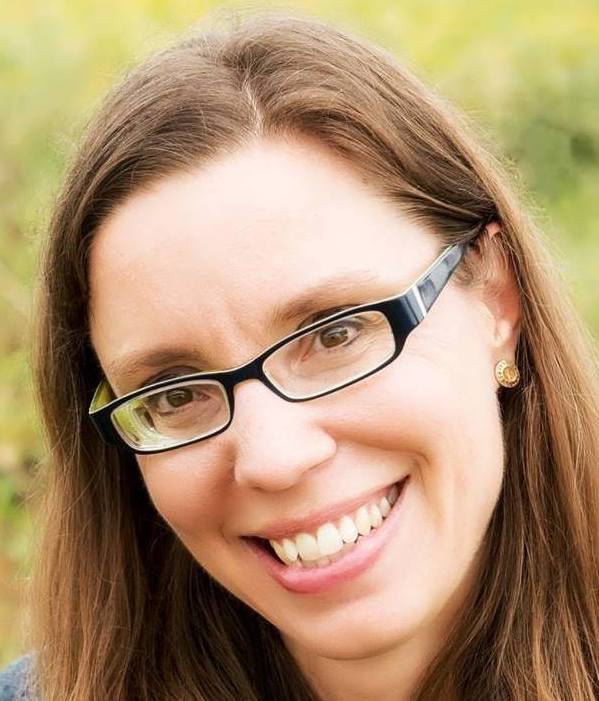
“In our own state, too many leaders have sown seeds of distrust, fear, and cynicism in our public education system and its teachers, which hurts recruiting and retention.” – Gina Benz, English teacher at Roosevelt High School in Sioux Falls
Sioux Falls seeks diversity in teaching ranks
Ana Rodriguez Garcia wasn’t certain about her career plans when she signed up for the Teacher Pathway program as a Roosevelt High School student in 2019. She had some friends who had taken the class and she liked Benz as a teacher, so she decided to give it a try.
Her indecision lingered as she and her Pathway classmates learned about the history of education, lesson planning, classroom culture and grading practices. There was even a shadow of doubt when Rodriguez Gasrcia started getting field experience with first- and second-grade classes at Oscar Howe Elementary once a week in 2020, right before the pandemic hit.
“It was difficult to know whether I could present myself as a good role model to students, especially ones that young,” she said.
But something clicked when she started one-on-one sessions in the hallway with students, using sight words to help their reading and flashcards for basic math equations, developing a personal connection and seeing signs of progress.
“Once I got to know the students, I sort of figured out that I could do it,” said Rodriguez Garcia. “I have the passion for teaching, and I love being around kids.”
She graduated in 2020 and is now a junior at USD, majoring in elementary education and Spanish and working part time as a paraprofessional at Austin Elementary School in Vermillion.

Having gone through the Sioux Falls school district without learning from a Hispanic teacher, Rodriguez Garcia knows the importance of students having positive role models with similar backgrounds and experiences – and, in some cases, the same language. Her plan after studying abroad in Spain and graduating in 2025 is to return to Sioux Falls and perhaps teach at the district’s Sonia Sotomayor Spanish Immersion Elementary School.
“Growing up, I never had a Hispanic teacher around,” said Rodriguez Garcia, 20. “I was always around white teachers, and I loved them all very much, but seeing somebody who has the same color or background really helps to show that you’re able to reach that level yourself. A big factor for me was that I started meeting teachers who were more diverse, and it helped convince me that I could be a teacher and be that role model for kids, so they don’t feel left out.”
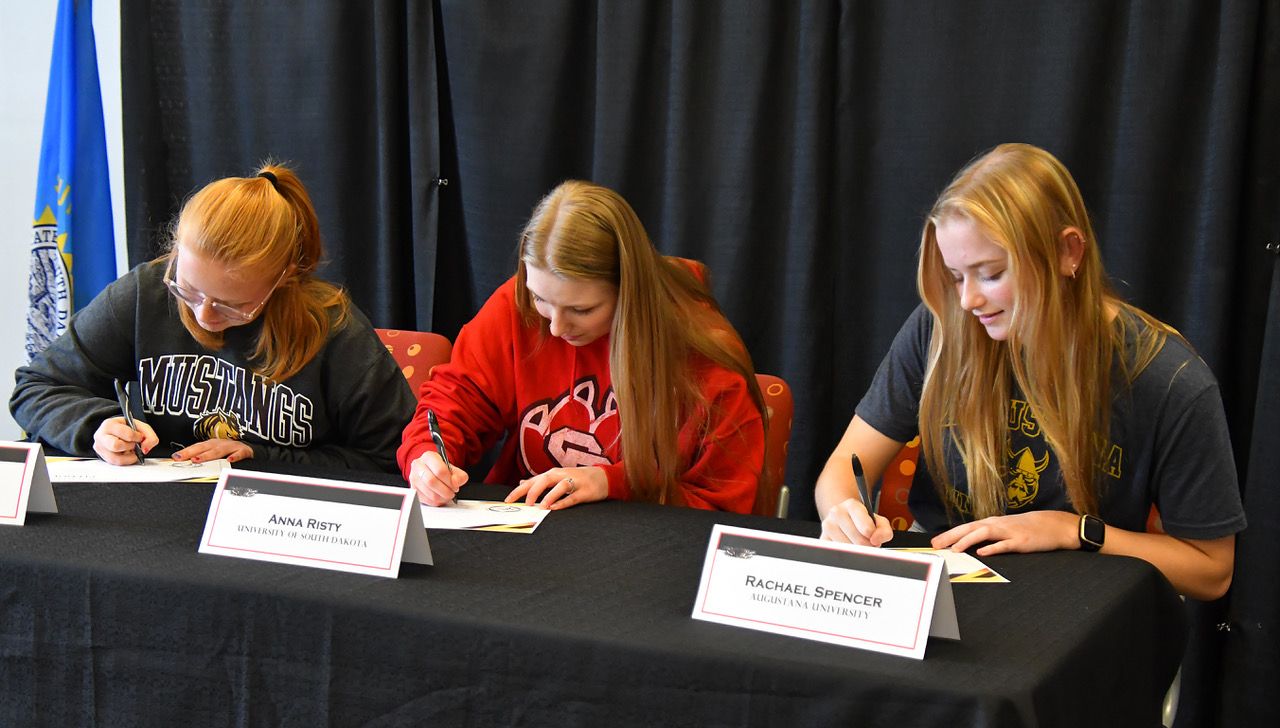
Seeking avenues for next generation of teachers
The South Dakota Teacher Compensation Review Board, formed at the recommendation of the Blue Ribbon Committee, found in its 2021 report that the number of statewide unfulfilled teacher vacancies was higher than the previous four years, with the lack of qualified applicants a cause for concern.
“In the past, schools would receive many applications for open teaching positions, particularly at the elementary level,” the report read. “In recent years, the number of applicants for open positions have been in the single digits for districts of all sizes and locations. This indicates that, while the number of certified teachers is increasing, the pipeline to fill school district positions is smaller than ideal.”
Jim Holbeck, Harrisburg superintendent until his retirement in 2019, was well aware of that trend and worked for several years with school districts such as Tea and Dell Rapids to explore solutions. Everything came back to the notion that they needed to inspire and train prospective teachers among the high school ranks who could then end up working as South Dakota educators.
The man Holbeck entrusted to carry out the mission was Travis Lape, innovative programs director in Harrisburg, who started a South Dakota chapter of Educators Rising, a national network that provides hands-on experience and training to high school students interested in becoming teachers.
Since forming in 2017, Educators Rising South Dakota has developed chapters in 35 schools with more than 300 students involved. The organization stages recruitment events with colleges such as Dakota Wesleyan University and Black Hills State University and hosts a leadership conference with motivational speakers, breakout sessions and other activities meant to spark interest in education as a career.
“I grew up in Marion in a class of 27 kids, and I was one of a couple kids who went into teaching,” said Lape. “We weren’t sitting around at the lunch table talking about becoming teachers, because that wasn’t the cool thing. Now we bring kids to college campuses and they’re surrounded by a hundred other kids in a high-energy environment, and they’re thinking, ‘Whoa, I might need to take a look at this as a profession.’”
Rachael Spencer, a 2022 graduate of Brandon Valley High School, was inspired by attending a presentation on special education at an Educators Rising event and wants to teach deaf education, whether in South Dakota or elsewhere. Her connection to a high school classmate who is hearing impaired motivated her to continue her American Sign Language studies.
“It’s important to understand that there doesn’t have to be a boundary between those with hearing and those with hearing loss,” Spencer said during a speech she gave at a national Educators Rising conference in Washington D.C. “Our expectations and our hopes for others can go a long way.”
Spencer joined several Brandon Valley classmates in signing a “Future Teachers Pledge” in the spring of 2022 and she’s now a freshman at Augustana University, adding to a future pipeline that educators hope will brighten the future of the profession in South Dakota.
Lape said that increasing teacher pay is an important part of the process, but other avenues should be explored, such as developing a teacher academy or offering grants to elementary education majors who pledge to stay in South Dakota to teach, similar to the Dakota Corps and Freedom scholarship programs.
“One thing we need to think about is, are teaching salaries ever going to be where we want them to be or where they should be?” Lape said. “I don’t know in my lifetime if that’s ever going to be the case. So what are other ways we can think about boosting the profession and reducing the amount of debt on our teachers? One way is to continue to give money to the top end of the profession, to those veteran teachers to keep them there, but on the recruiting side, maybe turn to lowering the debt load coming out of college to help pave the way for a new generation of teachers working and staying in South Dakota.”

